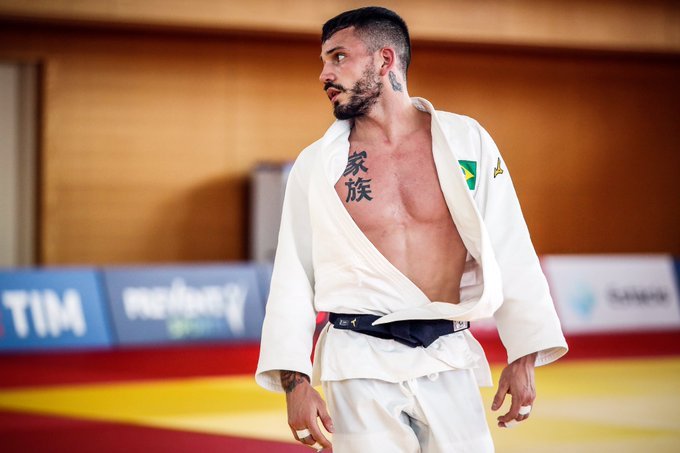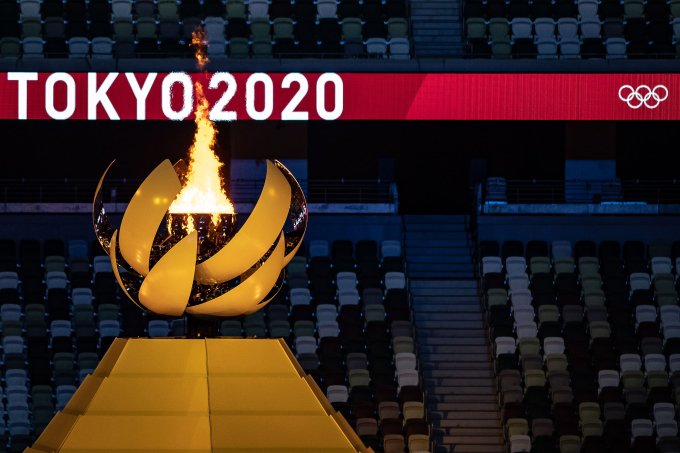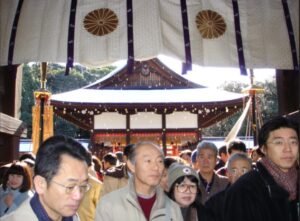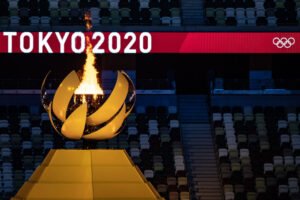The Tokyo Olympics took place in 2021, due to the COVID-19 pandemic, from July 23 to August 8.
Anticipated for four years and postponed due to the COVID-19 pandemic, the 2020 Tokyo Olympics were followed by thousands of people and marked the second time Japan hosted the event, with the first edition in the country taking place in 1964.
A curiosity about the event is that the International Olympic Committee (IOC) has a rule that the Olympics have French and English as official languages since they originated in France. Additionally, the native language of the host country also becomes official, and in this edition, it was Japanese.
Because it is a language with very specific characteristics, some moments related to the Japanese language caught the attention of viewers at the Tokyo Olympics, as recounted below.
Japanese alphabet at the Tokyo Olympics
One of the characteristics of the Tokyo Olympics that caused bewilderment among Brazilian viewers and was widely discussed on social media and news portals like G1 was the order of the delegations in the opening ceremony parade. The delegations entered in a different order, for example, Yemen entered right after the Andorra delegation and Zambia before Brazil. This happened because in this edition of the event, the parade order was organized according to the Japanese alphabet, the native language of the host country.
As explained by Professor Maurício Kanno, the Japanese language is organized as follows: first the vowels a, i, u, e, o, and then the consonants in the order k, g, s, z, t, d, n, h, b, p, m, y, r, w. The order of pronunciation in the language is a, i, u, e, o, ka, ki, ku, ke, ko, and so on.
Athlete with ideogram tattoos
Another point that caught the attention during the Tokyo Olympics, this time from Japanese viewers, was Brazilian judo athlete Daniel Cargnin, a bronze medalist. The reason? Daniel has a tattoo with two ideograms that form the word ‘kazoku’, which means family.
As reported by Folha de São Paulo, the athlete went viral on Japanese social media and gained fans who liked his tattoo and stated that it could signify the respect the athlete should have for his family.

Olympic sports
One novelty of the Tokyo Olympics, worthy of an honorable mention, is that five new disciplines were added to the competition. The event featured 46 sports disciplines, including individual sports (kojin supootsu, 個人スポーツ) such as judo (juudou, 柔道), and team sports (chiimu supootsu, チームスポーツ) such as volleyball (bareebooru or bare-booru, バレーボール).
The new Olympic sports are: surfing (saafin, サーフィン), skateboarding (sukeeto, スケート), karate (karatedo, 空手道) – which can be written in romaji as karatedo -, softball (sofutobooru, ソフトボール)/baseball (yakyuu, 野球), and sport climbing (supootsu kuraimingu, スポーツクライミング).
Surfing is not entirely new to the event; the discipline was already present at the 1912 Stockholm Olympics. Skateboarding made its Olympic debut with two disciplines: park and street.
Karate had two disciplines in the games: kumite (traditional combat) and kata (simulation of combat without physical contact). Karatedo means “the way/art/technique of empty hands,” with the meaning of each ideogram as follows: 空 = kara = empty; 手 = te = hand; and 道 = do = way/art/technique.
Baseball, like surfing, also participated in another edition of the Olympic Games in Stockholm in 1912. This sport is considered the most popular in Japan. Softball emerged from baseball, and in this edition, there was only the women’s discipline, while in the baseball competition, there was the men’s discipline.
Finally, sport climbing made its debut at the Tokyo Olympics with three disciplines: speed, bouldering, and lead.





